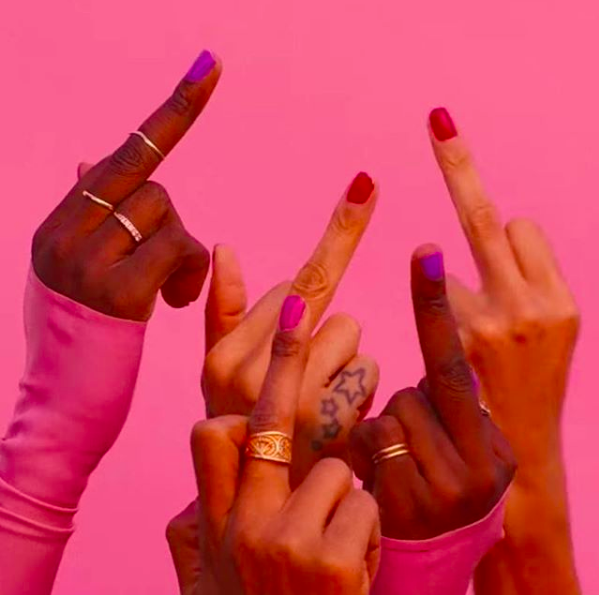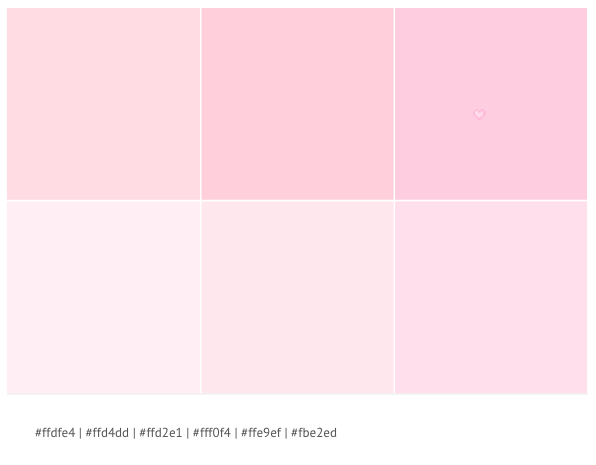July 5, 2018
Pink is feminine. PYNK is power.


Janelle Monae’s “PYNK” features dancing women clad in pink leotards and pink labia pants, but the message behind it all goes deeper than you think. When most people think of the color pink, they think of femininity. They think of the infamous gender reveal. Now, they also think of Millenial pink. If there’s a color with a rich history, then it has to be this one.


photo via Tumblr / @taeskai
It’s a complex one for sure.
Pink has been gendered back and forth many times. Prior to the 1940’s, society gendered pink for boys and blue for girls. This is because pink, a lighter shade of red, was considered “war-like” and strong, while blue was “delicate and dainty“. Unfortunately, these keywords already formed their associations early on.
However, extensive advertising, the influence of pop culture and a growing pattern of use, eventually reversed these colors’ gender roles. “By the 1950s, pink was strongly associated with femininity,” says Jo Paoletti, author of “Pink and Blue: Telling the Boys from the Girls in America”. What was once a strong color for boys was now a soft and feminine color for girls.
Note how easily society calls any color associated with girls “dainty,” “soft” and “feminine.” It’s further proof that gender roles are truly a construct.
In the ’80s and ’90s, especially with the Breast Cancer Awareness campaign, pink steadily became associated with the concept of femininity.
However, in recent decades, the words power and fierce have reclaimed the color pink. Events including the pussyhats of anti-Trump marches and the Pink Brigade in India have been active in reclaiming this color as a symbol of femininity and power. The grassroots organization CODEPINK is also instrumental in this reclamation.
“Pink has now become emancipated from the color of harmlessness, cuteness, sweetness, innocence, and the oppressed.” —Barbara Nemitz, co-author of Pink: The Exposed Color in Contemporary Art and Culture (2006).
And now, most recently, Monáe’s song by the same name (different spelling) “PYNK” is also taking part in this movement.
“PYNK” is one of the most gender-conscious, sexually liberating and feminine songs of 2018. Before she released the music video, Monáe came out as pansexual in a Rolling Stone interview. Gender fluidity is one of the many ideas at the heart of Monáe’s 48-minute emotion picture, “Dirty Computer.” The video’s plot features a romance between Monaé, Tessa Thompson and Jayson Aaron.
Overall, it was a win for the queer, black and female community. Or for anyone “feeling ostracized or bullied for just being their unique selves.”
From a pink desert landscape to a hyper-feminine pink bedroom, the video is rife with feminist imagery. Probably the biggest thing fans caught onto are the labia pants designed by Duran Latink.
A closer look even reveals that each pant has a slightly different design. “Duran chose fabrics in different textures and hues for each of the layers (or lips!) and it was so strangely yet beautifully realistic,” says stylist Alexandra Mandelkorn in Vanity Fair.
Monáe certainly wanted to be as inclusive as possible with the pink pants. That’s why there are women who aren’t wearing them as well. This purposeful move says that having a vagina does not always equate to being female.
The vagina pants montage is not only “a celebration of the color pink, but also of womanhood, femininity, sexuality, friendship and the experience of identifying as a woman.”
Cadillacs, sunglasses, popsicles, eyeliner, bedsheets, bubbles and nails are just a short list of all the pink-hued things in this video.
Monáe doesn’t sacrifice typical feminine things and ideas for something more harsh and edgy. This isn’t to say that those other qualities can’t be feminine. In fact, the slumber party scene in the video features parts of femininity oft-deemed “unfeminine”. Namely, the exaggerated pubic hair peeking out from a pair of undies embroidered with “I grab back”. Great scene, by the way.
There’s also a clip showing a woman wearing pink gloves, punching and kicking a punching bag. It’s a short scene, but a meaningful one. One that is a visual representation of girl power.
The solo shot of hands flipping off the camera is also a fan favorite. It symbolizes “f— the patriarchy and a society that disrespects all types of women.”
Overall, Monae’s video conveys a utopia-like pink world in the midst of chaos. It’s a tribute to self-love in a world where non-conforming people are deemed dirty computers. Sound familiar?
From the video’s description: “‘Pynk’ is a brash celebration of creation. self love. sexuality. and pussy power! Pynk is the color that unites us all, for pink is the color found in the deepest and darkest nooks and crannies of humans everywhere…”
Pink is a color that unites us all. It seems that the color pink has come full circle. Once a symbol of strength and war-like tendencies for boys, pink is now just that for women.